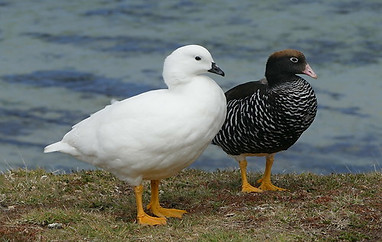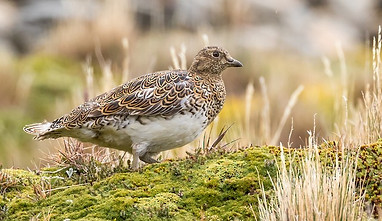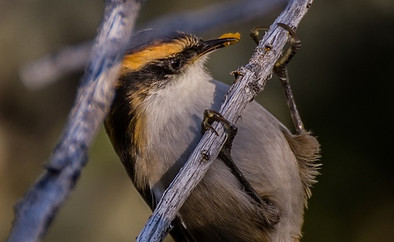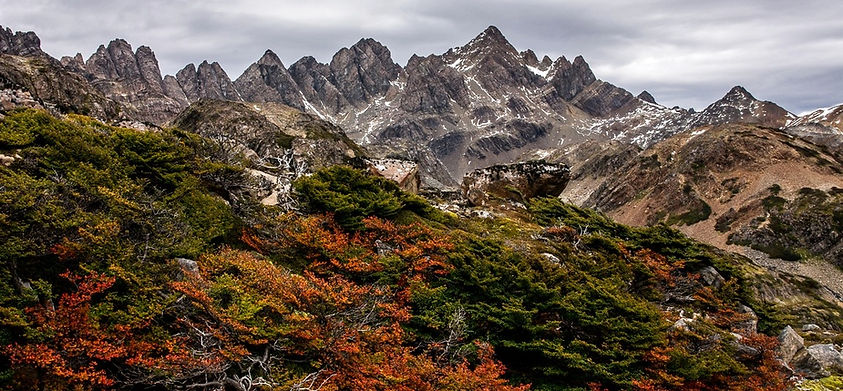
Isla Navarino
Isla Navarino is the southernmost uninhabited island of South America thus home of the southernmost trekking in the world, the renowned Dientes de Navarino trek. Located in the southern banks of the Beagle Channel which waters are shared between Chile and Argentina, the island represents a permanent residence for approximately 2000 people who are mostly settled in the town of Puerto Williams. Although the town was originally created as a naval base for the Chilean Navy, Puerto Williams has incresingly gained popularity among true adventurers and trekkers who are seeking for an untouched and pristine contact with Nature while travelling in Patagonia. Being far away from the crowed trails of Torres del Paine National Park and lacking the accommodation options and facilities of Puerto Natales grant the explorer with a truth and unique experience of the Chilean Patagonia as it was half a century ago.
Trekkings

Puerto Williams
Puerto Williams is located on the northern shore of Isla Navarino facing the Beagle Channel and the Argentinian side of Tierra del Fuego island. It is the capital of the province of Cape Horn which includes neighbouring islands such as Isla Hoste, Picton, Lennox and Nueva besides the archipelago of Wollaston islands worldy known as Cape Horn. These islands have been populated for 6000 years by the indigenous tribe of Yagan with whom the first European explorers of the early XIX century had their first encounters; in the years between 1826 and 1830 in fact two British surveying expeditions led by captain Philip P. King and later by captain Robert FitzRoy onboard of HMS Beagle, performed the first geographic and oceanographic survey of the southernmost archipelagos of South America. The Chilean presence on Isla Navarino came much later when in 1953 a small settlement named Puerto Luisa was founded, which name was changed later on in Puerto Williams. The area was strategically populated during the late '70 after the military dispute between Chile and Argentine over the control of Picton, Lennox and Nueva islands situated in at the eastern end of the Beagle channel; since then the population has grown, reaching the nowadays two thousand inhabitants. In the last couple of years Puerto Williams contended for the title of the southernmost city of the world with the Argentine capital of Tierra del Fuego, Ushuaia. In 2019 in fact, Puerto Williams being the capital of Cape Horn province was recognized as a city by the Chilean government, despite its small number of inhabitants.
Dientes de Navarino Trek
With more than 100km of trails Isla Navarino is a rugged and pristine backpackers's paradise with rugged tooth-like peaks, rusty moors, sub-antarctic forests and hundreds of lakes. The most popular multi-day trail is the renowned Dientes de Navarino circuit, defined as the southernmost trekking in the world; a fifty-kilometer backpacking adventure which circles around the spires of the Dientes mountain range that crosses the island from West to East. Dientes de Navarino is a minor range which belongs to the Fuegian Andes and which main peaks slightly go beyond 1000 meters (3000 feet approx). Trekking around this mountain range takes between 4 to 5 days and even though the altitude doesn't represent a major challenge, so it does the weather which can change abruptly and drastically due the high degrees of latitude and the vicinity to the Antarctic continent.
Dientes de Navarino trek was created in the early '90 by the australian traveller Clem Lindenmayer, who tragically disappeared some year ago in the mountains of China, and it belongs to the Ruta de Bienes Nacionales of Chile.
Cape Horn Biosphere Reserve
Isla Navarino has no native land-dwelling predators except for the Canadian beaver which was introduced in the late Forties and is today putting in danger the survival of the native sub-antarctic forest and all the birdlife that relies on it.

Kelp Goose (Chloephaga hybrida)
The Kelp goose is a member of the duck, swan and goose family Anatidae and is exclusively be found in the Chilean and Argentinian Southern part of Tierra del Fuego, Isla Navarino and the Falkland Islands. It presents sexual dimorphism, being the male completely white with black beak and yellow feet, while the female is dark brown with grey horizontal stripes on the chest and yellow feet.
They're normally spotted in couple along the rocky northern part of Navarino and near Puerto Williams where they feed only on kelp.
White-Bellied Seedsnipe (Attagis malouinus)
Locally known as Perdicita Austral is a specie of bird of the family Thinocoridae which inhabits Southern Argentina mountainous part till Tierra del Fuego island and neighbouring Isla Navarino.
Generally a scarce sight is a bird of moorland, bogs, and rocky slopes above the treeline even though in winter, sometimes descends to lowland Patagonian steppe. Found in pairs or small groups it can be spotted along the Dientes de Navarino circuit around the top of Cerro Bandera or when reaching the plateau of Paso Virginia during the last day.

_JPG.jpg)
Fire-eyed Diucon (Xolmis pyrope)
A Southamerican tyrant flycatcher which can be found in Chile from the Atacama desert down to Tierra del Fuego. White throat and belly, with dark grey upper part and upper wings, approximately 20cm long its distinctive feature is the intense red iris.
Diucons are generally very confident birds and therefore are curious and can be easily approached by birdwatchers, as well as quite territorial. They can be spotted near Puerto Williams in open spaces and gardens and while trekking to Cerro Bandera in the first part of the ascent they can be seen on top of branches or hoovering around.
Austral Pigmy Owl (Glaucidium nanum)
Locally known as Chuncho this is the smallest of the owl in South America, been found in Chile and Southwestern Argentina until Tierra del Fuego and Isla Navarino. Its natural habitat is the temperate and southern beech forest and besides beeing a solitary species is commonly found in the shrubland and wood around Puerto Williams.
It is a fierce predator capturing preys even larger than him such as rodents, lizards and big beetles. Mainly cover by dark to light brown feathers with small white dots in the upper part of the wings, its shape and its habit to perch on trees and bushes made it easy to spot.


Thorn-tailed Rayadito (Aphrastura spinicauda)
Rayadito belongs to the family of Furnariidae and is a small and nervous native bird of the temperate and subantartic forests southern of parallel 35°S of South America. It's main distinctive feature is the long and spiny tail divided into twelve rectrices.
These birds feed on small insects and grubs that they find on trees or bushes bark and they can be sharing the environment with Treerunners and Striped Woodpeckers. While climbing up to Cerro Bandera on the first part of the Dientes de Navarino trek they can be spotted in the austral beech forest.
_edited.jpg)
Isla Navarino is situated around 55° South and is characterized by a stark subantarctic climate similar to that of the Southern Tierra del Fuego, even though its mountains are even more swept by the fierce gales coming from the Drake passage. Average precipitation is way higher compare to that of Puerto Natales or Torres del Paine, and ranges between 2000m of the lowland northern part of the island where Puerto Williams is located, to the more than 3000m of the southern part of Navarino which is in fact dominated by moorland, bog-pits and hundreds of lakes.
Isla Navarino in Spring (September to November)
Spring arrives late at these southern latitudes therefore, while if you're travelling in Patagonia during the months of September or October you're going to find a decent weather around Puerto Natales or Punta Arenas, in Isla Navarino things are a bit different. During these months in fact you'll still find snow in most of the Dientes de Navarino circuit, therefore bring proper equipment with you like gaithers, good boots and a 4-season tent. The area around Puerto Williams and the Beagle channel starts to get good weather in october and november.
Isla Navarino in Summer (Dicember to February)
Perhaps the best moment for hiking to Cerro Bandera or trekking the Dientes circuit. Snow is generally almost absent from Paso Australia, Ventarron or Virginia which are therefore much safer to tackle; however there can still be strong gales and changeable weather during the early summer. Connection via sea and air between Punta Arenas and Puerto Williams are much more frequent during this season.
Isla Navarino in Fall (March to May)
Isla Navarino in fall is a hiker and photographer paradise, especially during the end of March and the first half of April. During these weeks the wind tends to die out with the arrival of the winter and sunny days are quite pleasant; moreover the Magellanic forest starts changing its colours. Be aware that late fall is also the rainest moment of the year and the absence of wind tends to create long and dull precipitations that can persist in the island for a week or so. Air and sea connection is still acceptable.
Isla Navarino in Winter (June to August)
These are though and difficult months, with the daylight reaching its minimum (7 to 8 hours daily between June and July) and snowfalls getting common even at low altitude around the Beagle Channel and Puerto Williams. Flights have a limited frequency even though the boat from Punta Arenas operates year around.
When to Travel to Isla Navarino
How to Get to Isla Navarino
The logistic hub for Isla Navarino is the town of Puerto Williams which is equipped with both airport and harbour. There are only three ways to get to the island, being two of them via sea and the third one via air.
Punta Arenas to Puerto Williams Flights
Regular flights operated by the regional company DAP connect Punta Arenas with Puerto Williams and vice versa once a day from Monday to Saturday. Luggage weight is limited and on average the ticket costs around 100 USD one way.
Puerto Arenas to Puerto Williams by Boat
The capital of Magallanes region is connected with Isla Navarino via sea by the regional company Tabsa; the ferry Yagan leaves Punta Arenas regularly every Thursday around 18:00 and reaches Puerto Williams on Saturday in the early morning between 01:00-03:00 making a 52-hour boat trip. The trip back is scheduled to leave Navarino on Saturday afternoon around 16:00 arriving to Punta Arenas on Sunday night at 23:00/24:00.
During late spring and summer there are normally more frequencies up to two per week.
Ushuaia to Puerto Williams by Boat
The third alternative to get to Isla Navarino is the boat crossing of the Beagle Channel from Ushuaia. The boat ride takes approximately 30-45 minutes, you'll desembark in Puerto Navarino and from there a van will drive you in about one hour to Puerto Williams along the road running on the northern side of the island.
Accommodations in Puerto Williams
In the last decade Puerto Williams has adepted to the increase demand of tourism and more accommodation options are now available. In the town centre you can still find economic backpacker hostels such as Sur-Sur Hostal or Refugio El Padrino, while outside Puerto Williams two high-end lodges provide scenic and isolated accommodations. These are the Lakutaia and Errante EcoLodge. However our choice always go for the Hotel Fio Fio, recently built four years ago, it provides comfortable, cozy rooms and a good breakfast for a decent price.







